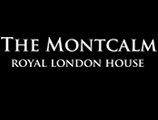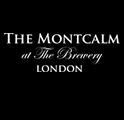London is a city that’s bridged by its history and its plans for the future, with everything from the experiences on offer to the architecture and attractions available all tapping into the London of old and the London of the future.
As you wander past the luxury hotels for families, many of which are located around the Royal Parks and which occupy some of the oldest buildings and townhouse structures in the city, you get some idea as to the way that London has changed – embracing the old and enhancing it with new upgrades and renovations.
In this blog, we’re taking you on a short tour of some of the best landmarks to immerse yourself in London’s history – both the old and the new.
London Eye
This might seem like a strange place to start – after all, the London Eye is a fairly futuristic structure which most of us will still remember being erected and opened in time for the millennium in 2000. However, this landmark has a place in London’s history due to its incredible success and the fact that it was originally designed as a temporary structure which would only be open for a few weeks to celebrate the millennium and to infuse something new into the London landscape.
Designed as the result of a competition for Londoners to submit their ideas for an immerse structure to celebrate the arrival of the year 2000, the London Eye became so successful and so popular with tourists and locals alike that it remained in place long beyond the original plans.
Now, it’s hard to imagine the London skyline without the great wheel in place!
Tower Bridge
Onto some old history now, with Tower Bridge which is located a stone’s throw from The Montcalm London City and was first built in 1886 to help facilitate the movement of pedestrian and road traffic over the river Thames from one side to the other. The bridge took around 8 years to construct and complete, with the design needing to be adaptable to allow for a crossing over the river which would not impede on or get in the way of passing ships using the river.
The final design encompassed the elevated pathways between the towers, the towers themselves which eventually became part of an immersive tourist and visitor museum experience, and the all-important central mechanism which allows the structure of the bridge to rise out of the way of ships as and when required.
A few interesting things to note about Tower Bridge include the fact that passing beyond and raising the bridge does not cost sailors or captains anything, and that the towers are used just as regularly for private events as they are put to use for those needing the bridge to be raised.
Monument to the Great Fire
Another landmark which is located just minutes from Tower Bridge, close to the most popular accommodation in London City and beyond, the Monument to the Great Fire brings to life the subject of many children’s nursery rhymes and stories. Constructed by Christopher Wren, a famous architect in the 1600s, the Monument commemorates the great fire of London which originated in a bakery on Pudding Lane, and which swept through London from Sunday 2nd September through to Thursday 6th September back in 1666. The Monument stands at 62m in height and is built directly on the site of the St Margaret Church, which was burned to the ground in the fire, with visitors able to climb the 345 steps to reach the viewing platform. Today, this Monument is a Grade 1 listed structure and is deliberately constructed at 62m hight as this is the exact distance between the located of the Monument and the shop where the fire began.
A bittersweet London landmarks which commemorates a tragic incident, the Monument is not only part and parcel of the London skyline but also offers visitors a chance to observe London from up high on the viewing platform.
Big Ben
The most famous clock face in London, Big Ben is actually the name of the bell inside the clock tower rather than the clock itself. While the clock tower itself was once known as just that – the Clock Tower – in 2012 it was renamed the Elizabeth Tower to mark the Diamond Jubilee of Queen Elizabeth II.
Big Ben is a major part of London’s history because it not only serves as a timepiece for the city but upon its construction in 1859 it was also known as the most accurate four faced chiming clock in the world. The clock tower contains five bells in total with Big Ben the largest bell of the five, and while the clock has a backup electric motor which kicks in if required, the clock still uses its original Victorian mechanism to run every day.
The tower today marks the presence of parliament’s building and presents four different shields with each representing one nation in the UK – a rose representing England, a thistle representing Scotland, a shamrock representing Ireland, and a leek representing Wales.
Buckingham Palace
It is virtually impossible to arrive in London as a tourist and avoid all of the royal memorabilia and the various sites across London which celebrate all things to do with the royal family. Buckingham Palace is not only interesting for its connection to the royal family but is also an impressive architectural masterpiece worth viewing in person – within close proximity to both the hotels near Chiswell Street London and a host of other central attractions you may want to add to your itinerary.
Classed as London’s royal residence, Buckingham Palace is a focal point for British celebrations and mourning, and regularly sees tens of thousands of people filling the mall outside on specific occasions and days of note.
With so much of London’s history contained within its landmarks and city structures, immersing yourself in stories from the past and plans for the future couldn’t be easier for tourists today.

























